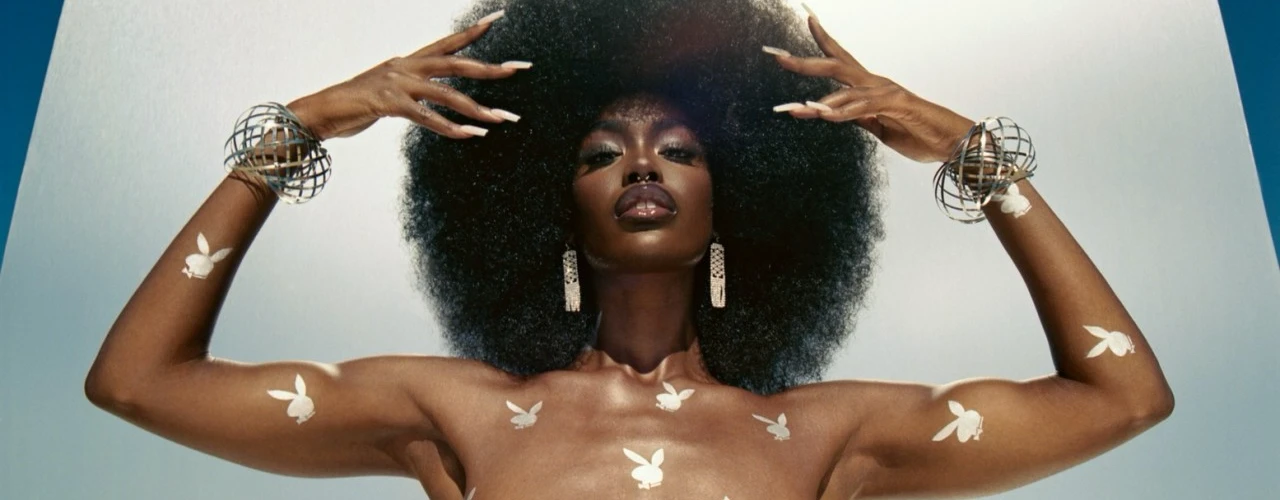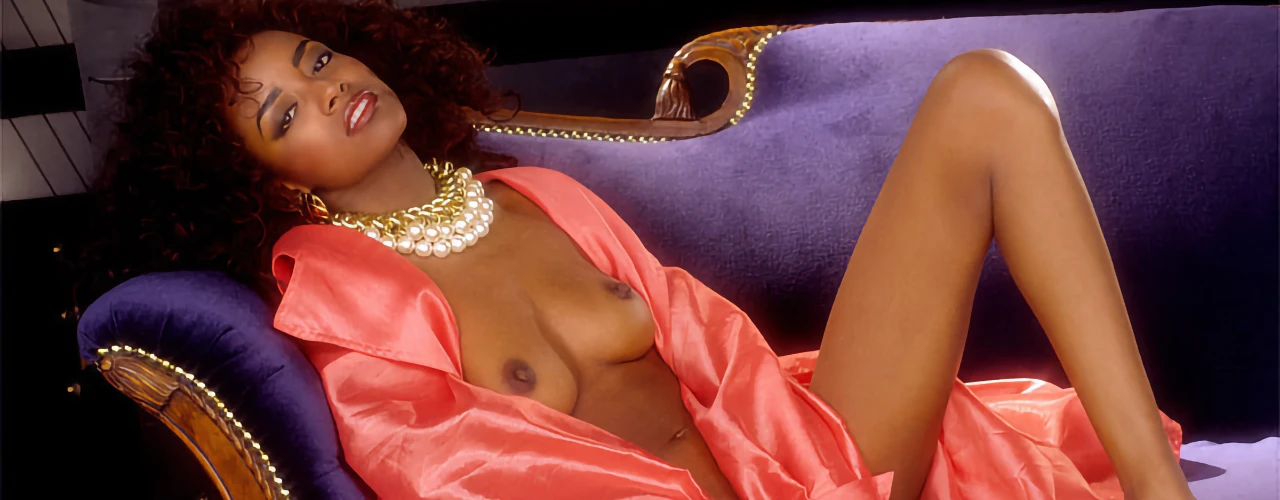Top 3 Black Playboy Playmates – Celebrating Ebony Icons of Playboy Magazine
Welcome to our feature on the Top 3 Black Playboy Playmates, celebrating the most iconic ebony beauties who graced the pages of Hugh Hefner’s legendary magazine. These stunning women not only captured the spotlight with their breathtaking looks but also broke barriers, bringing greater diversity and representation to Playboy’s history. This page highlights the elegance, sensuality, and cultural significance of the top three Black Playmates who left an indelible mark on the brand. From their unforgettable pictorials to their impact on pop culture, these women symbolize beauty, confidence, and empowerment. Explore exclusive details, photos, and the lasting legacy of these Playmates who helped redefine standards of glamour and eroticism. At Black Porn Stars, we honor their contribution as pioneers who carved a place for Black women in one of the world’s most iconic men’s magazines.

For over seventy years, Playboy has stood at the crossroads of eroticism and cultural conversation. From its famous centerfolds to its articles on politics, music, and art, the magazine built its brand on daring to show what others wouldn’t. But even within a publication that prided itself on being forward-thinking, representation wasn’t always evenly spread.
Throughout Playboy’s history, only a handful of Black women were chosen as Playmates of the Month or Playmates of the Year. For decades, the pages of the magazine reflected a white standard of beauty. Yet, when Black women did appear, they didn’t just blend into the crowd — they stood out, challenged the narrative, and redefined what glamour could look like.
Here, we celebrate three iconic women who broke through barriers and etched their names into Playboy history: Rosanne Katon, Miss September 1978; Stephanie Adams, Miss November 1992; and Eugena Washington, Miss December 2015. Together, they tell a story of beauty, ambition, and cultural change across three very different eras of the Playboy legacy.
Rosanne Katon – Miss September 1978

The 1970s were a decade of revolution: civil rights, feminism, and sexual liberation all colliding in a messy but transformative wave. Yet when it came to mainstream erotic media, Black women were still marginalized. That’s why Rosanne Katon’s appearance as Playmate of the Month in September 1978 was such a powerful moment.
Born in New York City, Rosanne grew up with a passion for performance. Before Playboy, she had already begun carving out an acting career, appearing in films and television throughout the 1970s and 80s. Her centerfold was shot in a style typical of the era — lush, glamorous, a blend of girl-next-door sweetness and sophisticated sensuality. But the woman herself was anything but typical.
Katon’s presence in Playboy represented more than nudity. She was a bold contradiction to the narrow beauty ideals of the time. Her Afrocentric features, her curves, her confidence — all sent a message that Black beauty deserved to be seen and celebrated on the same glossy pages that had long been reserved for blondes and brunettes.
Rosanne went on to appear in films like Bachelor Party and Zapped!, and she remained a vocal presence in Hollywood well after her Playboy spotlight faded. But for many readers, her September 1978 issue was a milestone: proof that the sexual revolution was incomplete without Black women at the forefront.
"Playboy didn’t make Rosanne Katon beautiful. She was already that. What the magazine did was admit what audiences already knew — that Black women belonged in the centerfold."
Stephanie Adams – Miss November 1992

By the time Stephanie Adams appeared as Playmate of the Month in November 1992, Playboy had been through decades of cultural turbulence. The 80s had seen the magazine struggle against competition from edgier rivals and a rising video porn industry. The 90s, though, brought a chance to reassert itself as glamorous, stylish, and still capable of defining sexual fantasy.
Enter Stephanie Adams. Tall, striking, and exuding confidence, Adams brought an air of sophistication to her pictorial. She was not a woman who disappeared into the background — she commanded attention. Her beauty was both classic and modern, carrying echoes of 90s supermodels like Naomi Campbell while still embodying Playboy’s trademark sensuality.
What made Adams remarkable was her multidimensionality. She wasn’t only a Playmate; she went on to write books, run businesses, and establish herself as a thinker and entrepreneur. She embodied a generation of women who were redefining femininity in the 1990s — independent, career-focused, and unafraid of being sexual on her own terms.
Adams’s later life was complicated, marked by personal struggles and tragedy, but her place in Playboy history is enduring. She was one of the few Black women to claim the coveted centerfold in an era that still too often relegated Black models to the periphery. Her selection was both a celebration of her own beauty and a step toward broader inclusivity in erotic media.
"Stephanie Adams wasn’t just a Playmate. She was a businesswoman, an author, and a woman who owned her sexuality in an era that wanted women to apologize for it."
Eugena Washington – Miss December 2015 & Playmate of the Year 2016

Nearly four decades after Rosanne Katon made history, Eugena Washington became the face of a new era for Playboy. Named Playmate of the Month in December 2015 and crowned Playmate of the Year in 2016, Washington symbolized a generational shift both within Playboy and the culture at large.
Audiences first met Eugena on America’s Next Top Model, where her statuesque frame and striking beauty made her a fan favorite. But it was Playboy that gave her the chance to fully embrace her sensual side. Her pictorial in December 2015 reflected a modern vision of eroticism: elegant, confident, and less about fantasy archetypes than about showcasing a real woman’s power.
When she was named Playmate of the Year in 2016, Eugena became only the third Black woman to ever hold that title. In a magazine that had long been criticized for its lack of diversity, this was not just a victory — it was a statement. Washington embodied the evolution of Playboy itself, a brand trying to stay relevant by celebrating inclusivity, individuality, and authenticity.
Her crowning as PMOY happened at a time when Playboy was experimenting with rebranding (even briefly removing nudity before reversing that decision). Washington’s victory reassured fans that the Playmate tradition wasn’t dead — it was evolving. And it was evolving into something more diverse than ever before.
"Eugena Washington didn’t just pose for Playboy — she redefined it for a new generation."
Why These Three Women Matter
Rosanne Katon in 1978, Stephanie Adams in 1992, and Eugena Washington in 2015 each came at very different cultural moments. Yet their stories connect in powerful ways:
- Rosanne Katon showed that Black women could no longer be excluded from the sexual revolution.
- Stephanie Adams proved that being a Playmate didn’t mean being one-dimensional — she combined beauty with business and independence.
- Eugena Washington became the face of modern Playboy, embodying diversity and strength in an era of change.
Together, they represent more than just three centerfolds. They represent decades of progress, setbacks, and breakthroughs in the recognition of Black beauty within one of the most famous men’s magazines in history.
Looking Forward
Today, the world of erotic media looks very different from the days when Katon, Adams, and Washington posed for Playboy. Platforms like OnlyFans, social media, and independent production have made diversity not just possible but essential. Yet the significance of these three women remains undeniable. They didn’t just pose — they disrupted.
Playboy’s legacy will always be complex, but within that legacy, the contributions of Black Playmates stand out as bold milestones. Katon, Adams, and Washington each left more than a centerfold behind. They left proof that beauty, sensuality, and power have no single color.
And if Playboy continues into the next generation, it’s almost certain that their influence will be the blueprint for the Playmates yet to come.